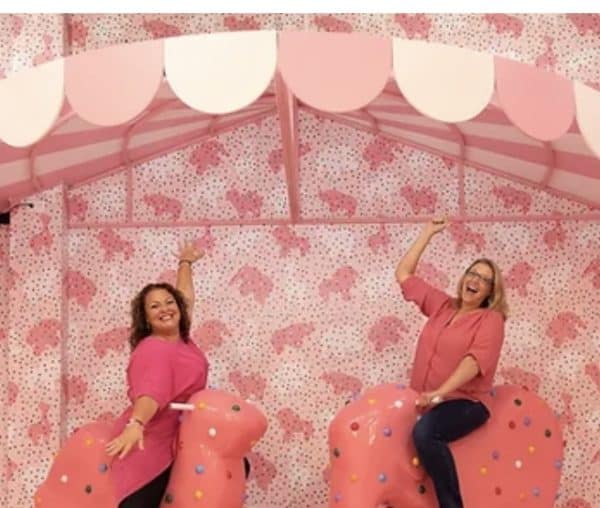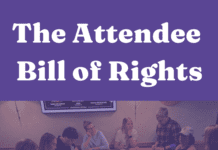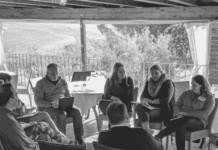Co-Founders of The Community Factory Nicole Osibodu and Liz Lathan say an unstructured approach to meetings and events is the secret to attendee ROI.
With backgrounds in creating and cultivating engaging events, Liz Lathan, CMP and Nicole Osibodu, formerly part of the founding team at Haute Companies, have launched The Community Factory, a new way of thinking about meetings and events.
Prevue recently caught up with Osibodu to learn about the new venture, and why a “no content” format resonates for our times. Structured meeting content, said Osibodu, misses the boat. “People are over being told what is important to them. Instead, they want to talk to other people about what matters in their life at that moment. The world changes so fast—to plan content for an audience that is living in an ever-changing world just makes you look tone deaf as a company.” An unstructured approach, she said, is the secret to attendee engagement. She also fully embraces the belief that if it’s not fun, we shouldn’t be doing it.
For meeting and event professionals, The Community Factory’s Barefoot Business B2B For Event Marketers offers a variety of free-form networking, from podcasts to small “sounding board” groups . “Maybe you’re in MPI or SITE or CEMA or PCMA, or maybe you are part of TechsyTalk or #Eventprofs, or maybe you’re not a joiner at all, but are looking for a place to lurk and feel like a part of something. That’s why we exist. No membership fees. No annual dues. Just some content, conversations, connections, and a whole lotta community love,” states the website.
The Barefoot Business concept can be applied to meetings of all kinds to build attendee engagement, said Osibodu. Her top tips for planners:
1. Create space in the agenda for moments of peer-led conversation. “That doesn’t mean throwing attendees in a room with a bar and calling it networking. People appreciate time to talk to other participants but you have to give them some sort of permission and direction on how to engage in the most meaningful way. There has to be thought behind it.”
2. Limit keynotes of any kind to 20 minutes. Then ask the speaker to engage with participants in a more intimate way throughout other parts of the day.
3. Think through people’s energy output. “If participants have been sitting for hours, don’t tease them with a quick bathroom break and some cheese cubes and then ask them to sit in a windowless ballroom for more hours after that. People want to stab their eyes out when you give them a day packed with sitting and listening,” said Osibodu. “Change it up—and ask yourself, how would I feel going through this day? ”
As well, Barefoot Business conferences bring professionals together for “immersive experiences, deep conversations and true camaraderie.” Last December, 15 participants with titles ranging from director of marketing to CFO and from TED speaker to VP of global events gathered at a ranch in Crawford, Texas for the first Barefoot Business conference. “It was exactly what people needed,” said Osibodu. “The feedback was that they’re just so drained from the same old thing at the many events they’ve attended. This event was all about them. They created the agenda and led the discussions.” Discussions included financial planning tips for business owners, a psychologist-led session about imposter syndrome, insights on how people can eat and move at events to enhance the experience, and more.
“Every time we create an event like this, it reinforces how much people just need each other,” said Osibodu. The next conference, Barefoot Business Argentina, is scheduled to take place in May and currently accepting applications.
You Might Also Be Interested In
The Wellness Journey: A New Playbook for Planners
2023 Roadmap: Planners Share Their Concerns and Strategies











